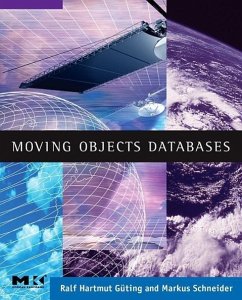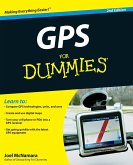Moving Objects Databases is the first uniform treatment of moving objects databases, the technology that supports GPS and RFID. It focuses on the modeling and design of data from moving objects - such as people, animals, vehicles, hurricanes, forest fires, oil spills, armies, or other objects - as well as the storage, retrieval, and querying of that very voluminous data.
It includes homework assignments at the end of each chapter, exercises throughout the text that students can complete as they read, and a solutions manual in the back of the book.
This book is intended for graduate or advanced undergraduate students. It is also recommended for computer scientists and database systems engineers and programmers in government, industry and academia; professionals from other disciplines, e.g., geography, geology, soil science, hydrology, urban and regional planning, mobile computing, bioterrorism and homeland security, etc.
Focuses on the modeling and design of data from moving objects--such as people, animals, vehicles, hurricanes, forest fires, oil spills, armies, or other objects--as well as the storage, retrieval, and querying of that very voluminous data. Demonstrates through many practical examples and illustrations how new concepts and techniques are used to integrate time and space in database applications. Provides exercises and solutions in each chapter to enable the reader to explore recent research results in practice.
It includes homework assignments at the end of each chapter, exercises throughout the text that students can complete as they read, and a solutions manual in the back of the book.
This book is intended for graduate or advanced undergraduate students. It is also recommended for computer scientists and database systems engineers and programmers in government, industry and academia; professionals from other disciplines, e.g., geography, geology, soil science, hydrology, urban and regional planning, mobile computing, bioterrorism and homeland security, etc.
Focuses on the modeling and design of data from moving objects--such as people, animals, vehicles, hurricanes, forest fires, oil spills, armies, or other objects--as well as the storage, retrieval, and querying of that very voluminous data. Demonstrates through many practical examples and illustrations how new concepts and techniques are used to integrate time and space in database applications. Provides exercises and solutions in each chapter to enable the reader to explore recent research results in practice.
"This book represents a milestone in the synthesis of temporal and spatial database concepts and techniques. It unifies and organizes the existing research into a coherent whole and presents substantial new results and approaches in many areas. In each case it begins with what is known, then it introduces the new concepts in an abstract and general model, and then it translates the ideas into a pragmatic representation of data structures or SQL-like query language extensions. As such, the book makes both an excellent text and an excellent reference. It also takes you to the frontiers of our understanding, so it is a great point of departure for a new researcher who wants to advance this field."
--from the foreword by Jim Gray, Microsoft Research
--from the foreword by Jim Gray, Microsoft Research








